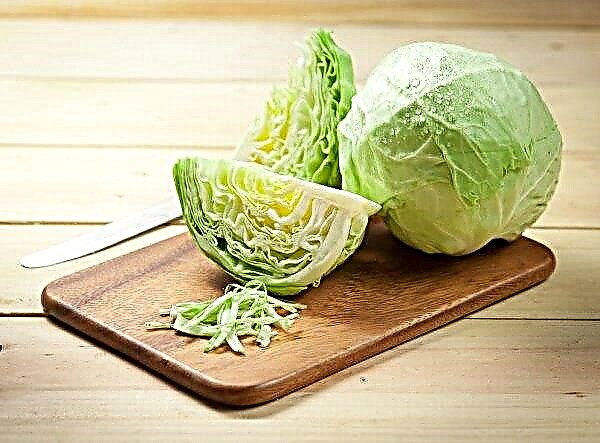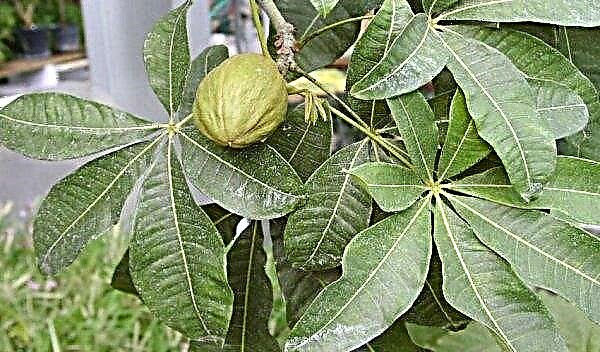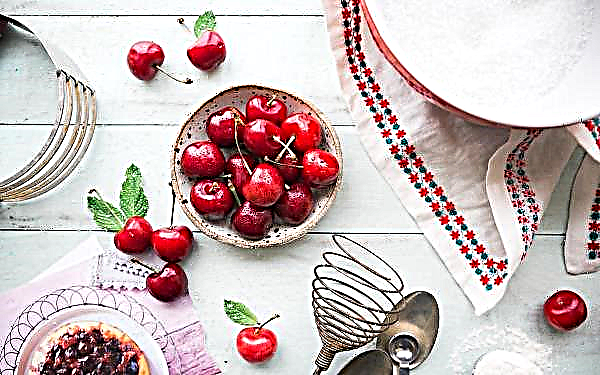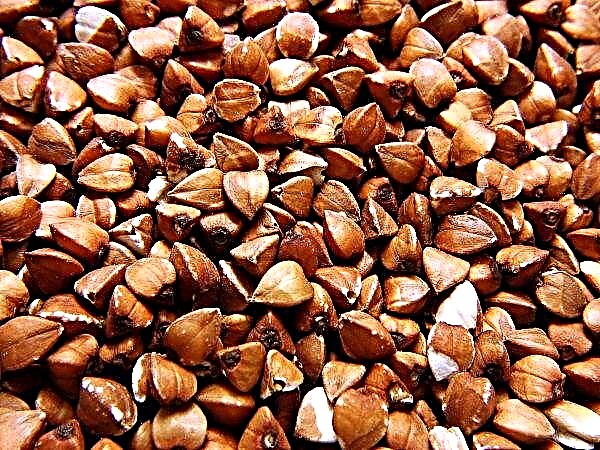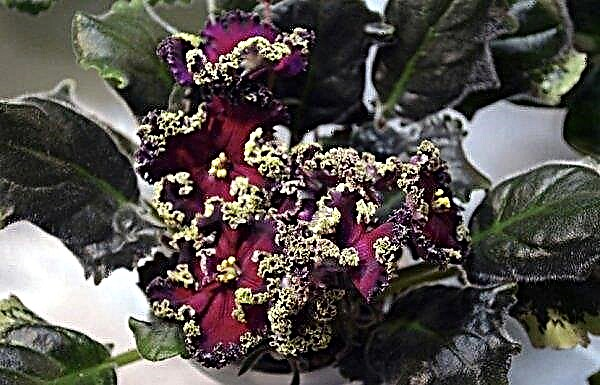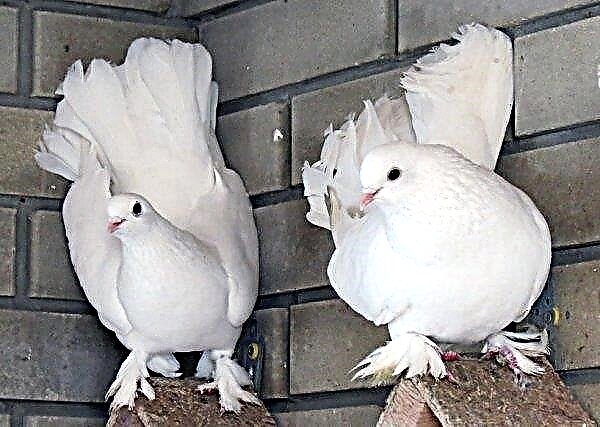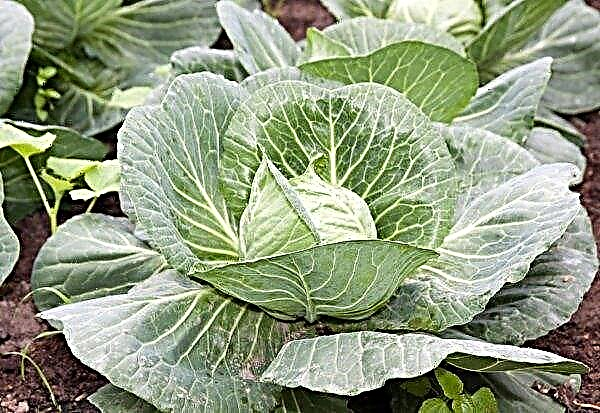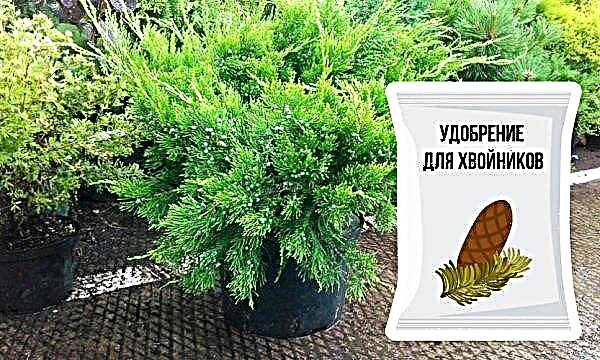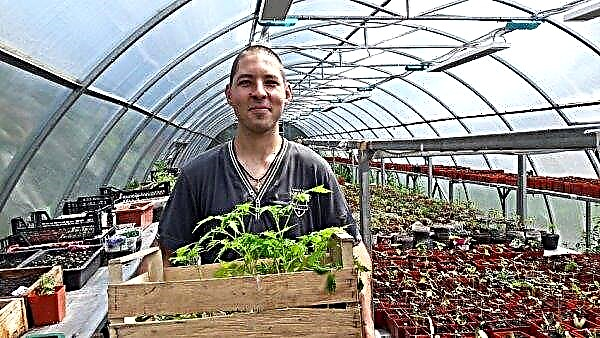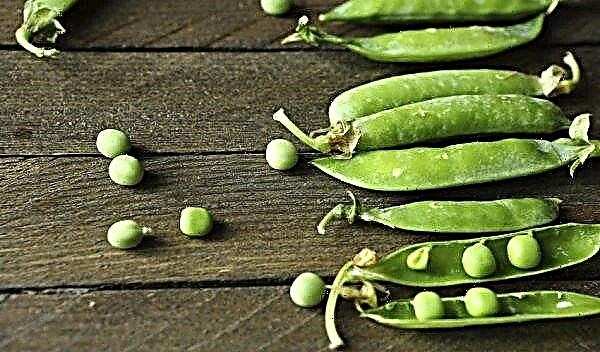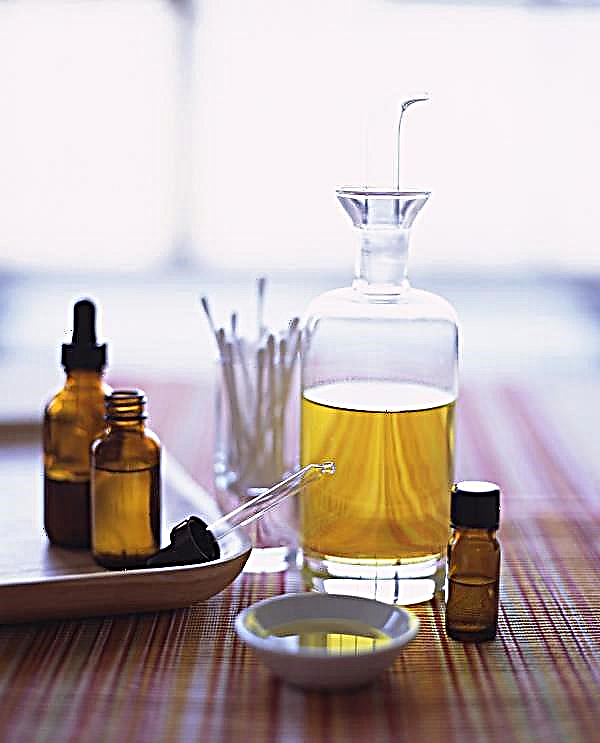If you are a fan of unusual plants, then it will be interesting for you to get acquainted with one of these - jatropha, or a bottle tree. It is interesting in appearance, undemanding in care, practically not affected by diseases and parasites, can be grown in an apartment and office. Read more about planting and caring for this plant below.
Botanical description of the plant
Jatropha belong to the Molochaev family. The birthplace of the plant is Central Africa: from this territory, the culture spread across the tropics and subtropics. Like all euphorbia, the jatropha is poisonous - its organs contain toxic elements. The most poisonous are seeds.
The main characteristics of the plant are collected in the table:
| Root system | Powerful, well developed. |
| Stem | Expands at the base, in shape resembles a bottle, up to 1.5 m high |
| Leaf shape | Broad-bladed, up to 30 cm long |
| Leaf color | Dark green |
| Inflorescence shape | In the form of an umbrella |
| Flower color | Bright red, pale red, coral. |
Important! When keeping the jatropha at home, the fact that its organs and seeds are poisonous should be taken into account. This plant should not be kept in a house where small children and pets live.
Main types
The genus of jatropha includes about 175 species, among which are represented succulents, shrubs, trees.
At home, 2 varieties are most often grown:
- Jatropha gouty (jatropha gout). The people called her "belly of Buddha", "leg of a bbw." The plant got such a name because of the bizarre shape of the stem, which expands greatly at the base and looks like a bottle. Plant height - up to 70 cm. This variety has beautiful dissected leaves, changing their color depending on age. They appear after the flowers. Blossoming is long - from spring to autumn, in room conditions - from May to June. The color of the flowers is bright red. Each inflorescence can be in a dissolved state for 2-4 weeks.
- Jatropha dissected. A small shrub that in nature reaches a height of 2-3 m. In the apartment, the bushes grow much lower and more compact. The leaves of the plant are dissected, dark green in color. As they grow older, the flower drops the leaves from the lower tier and becomes like a palm tree. This jatropha blooms with red flowers.


House growing conditions
Jatropha is not capricious, however, its decorativeness is fully revealed when certain conditions are created.
Lighting
One of the conditions for stable growth and flowering of a plant is bright lighting. Jatropha loves to be exposed to the sun during the day, and only in the midday heat it needs to be slightly shaded so as not to provoke leaf burns.
Important! Proper lighting is very important for the plant. With a lack of light in the jatropha, elongation of the internodes and loss of decorativeness are observed.
The plant reveals its beauty when placed on window sills located on the eastern side. It grows well on windows facing southeast and southwest. When grown on the north side, the jatropha most often withers away, refuses to bloom, and forms small leaves.
It is interesting that if the plant is gradually accustomed to partial shade, then it is able to get used to such an environment, only slightly changing the color of the leaves. But education must begin at a young age.
Ventilation
The decorative culture in question loves fresh air, but it must be protected from drafts. Daily ventilation of the room where the jatropha grows is recommended. At this time, it must be taken out to another room or make sure that it is not affected by direct air flows.
In the summer, the flower will respond favorably if it is transferred to a glazed loggia or balcony.
Temperature mode
The plant does not put forward special requirements for temperature conditions. From March to October, it feels great in the conditions of such a temperature range - + 18–22 ° С. From October and throughout the winter period, if possible, the temperature should be gradually reduced to + 14–16 ° С.
Air humidity
Indices of humidity in the room where the jatropha is contained do not play a role in its growth and development. It can grow both in low humidity and high. Therefore, if there are no other plants in the room, then there is no need to install an air humidifier or conduct regular sprayings.
A flower will respond well if dust is regularly removed from its leaves with a damp cloth.
Did you know? Jatropha seeds contain 40% oil, which in processed form can be used as biofuel. In 2010, the first flight was made using fuel, 50% of which is based on jatropha kerosene.
How to care at home
Caring for the jatropha comes down to standard and simple procedures - moisturizing, fertilizing, transplanting.
Watering
Watering the plant is necessary when the upper soil layer dries. Watering should be moderate. If the jatropha treats short-term droughts loyally, then it reacts poorly to bays.
In summer, the flower can be watered daily, in other seasons - 2-3 times a week. In winter, during the dormant period, humidification is reduced to a minimum - watered 2-3 days after the top level of the earth has dried. If the plant is transferred to cool conditions and completely discards foliage, then hydration can be removed altogether. But at the same time, the condition of the flower should be monitored daily.
If the plant is transferred to cool conditions and completely discards foliage, then hydration can be removed altogether. But at the same time, the condition of the flower should be monitored daily.
Watering after wintering resumes in February: they start with meager servings, gradually increasing volumes and frequency.
The plant needs the most moisture during flowering.
Water for irrigation is taken warm (room temperature). For indoor flowers, use rainwater, filtered or standing for 2 days water.
Water the jatropha under the root, controlling that moisture does not fall on the leaves and stem.
Important! With rare watering, the plant will accumulate moisture in the trunk, which means it will be thicker than those flowers that are watered regularly.
Top dressing
Fertilize this crop only during the growing season. The last top dressing is done in September. During dormancy, fertilizing is prohibited - this can have a detrimental effect on the development of the plant and will not allow it to properly winter.
During the growing season, 1 feeding per month is required. For jatropha apply fertilizers designed for cacti and succulents. The dosage is calculated in accordance with the recommendations of the manufacturers.
Transfer
There are no recommendations for regular transplantation of this plant. Since it develops powerful roots, it is necessary to transplant it as soon as it becomes crowded in the pot - about 1 time in 2-3 years. For transplanting, they acquire a larger pot and new soil.
The capacity for landing is chosen shallow and wide: it can be plastic or ceramic. If a tall and narrow pot is used, then a large amount of drainage must be laid in it.
Jatropha is planted in soil intended for cacti and succulents. It can also be mixed with your own hands - for this, part of the sheet soil and half of the soddy soil, peat, sand are taken. You can mix broken brick, vermiculite, perlite, small pebbles.
Important! Purchased soil does not need preliminary treatment. The earth mixture, mixed independently, must be disinfected by watering a solution of potassium permanganate or by keeping it at high temperatures in the oven, microwave.
They start transplanting in the spring, when there are signs of the formation of young leaves. They use the transshipment method, in which the old earthen lump is not destroyed.
Step-by-step technology is as follows:
- It is good to water a flower.
- Remove it with an earthen lump from the container in which it grows.
- Place a drainage layer of expanded clay, pebbles and other materials suitable for the purpose of water disposal at the bottom of the pot - the layer should occupy 1/3 of the entire capacity.
- Top with a layer of soil mixture.
- In the center, set a flower with an earthen lump.
- Cover with soil mixture.
- Water abundantly.
- Mulch the topsoil with crushed stone, expanded clay, pebbles or soil for the aquarium.

Breeding
Jatropha can be propagated by cuttings and seed method. The first method is simpler and more affordable, so they resort to it more often.
Cuttings
Cuttings are made in the spring: strong lignified shoots are cut.
Then, the following procedures are performed:
- Slices are dried until the liquid ceases to stand out.
- The cuttings are treated with a growth stimulator.
- Planted in the soil.
- Place a container with future plants in a place with a temperature of + 28 ° C.
- A month later, after the appearance of the roots, young jatrophs are transplanted into a pot.
Seeds
In the seed way, the flower is propagated as follows:
- Moisten the substrate before planting.
- Seeds are placed on the surface. They do not fall asleep.
- The container is covered with a film or glass, placed in conditions with a temperature of + 25 ° C and above, as well as bright sunlight.
- Crops are periodically sprayed from the spray gun with warm, settled water.
- Daily shelter is removed for a while for ventilation.
- After the emergence of the shoots - after about 2 weeks - the shelter is removed.
- When 2 leaves appear, they pick.
- After the formation of 5-6 leaves, transplantation of young specimens to a permanent place is organized.
 Seeds need to be collected with your own hands after artificial pollination. Experts say that germination can be achieved only from freshly harvested seeds.
Seeds need to be collected with your own hands after artificial pollination. Experts say that germination can be achieved only from freshly harvested seeds.Soil substrate is purchased in a specialized store. The one that is used to plant adult jatrophs is suitable.
As a container for growing, use those that are at hand, or purchase special boxes, peat pots, tablets, cassettes for seedlings.
Jatropha seedlings grow very quickly: in just a few months, they are no different from adult specimens. In young plants, round leaves first form, then they become wavy. The blades appear at the age of two, in the same period flowering begins.
Growing difficulties
One of the advantages of jatropha is that it has a strong immune system, practically does not get sick and does not get infected with pests (only in the vicinity of diseased plants). In rare cases, when the owner fills it too much in the winter, it can be affected by rot.
This problem can be noticed by the state of the leaves (they fade, soften, fall off) and the type of roots during transplantation. To fix the problem, it is necessary to rinse the roots with hot water, cut off the damage, treat the cut points with charcoal or activated carbon and transplant the plant into a new pot, completely replacing the soil.
Did you know? Jatropha is considered by experts at the Danforth Center for Plant Research as a promising culture for the manufacture of bioplastics that can decompose in the ground.
With errors in the care, the jatropha can react with changes in appearance. Most often, one can observe such manifestations:
Most often, one can observe such manifestations:
- Withered, yellowed, leaves fall. This occurs with insufficient watering. To fix the problem and restore its former beauty, it is necessary to establish a regime of irrigation and increase their volume.
- The plant drops unopened buds. The factor provoking such a drop is a lack of moisture. During flowering, watering should be enhanced.
- Leaves fall in the fall. For a jatropha, this can be normal and prepare for a dormant period. If no other symptoms are noticed, then nothing needs to be done. You can only try to lower the temperature by 2-3 ° C.
- The flower does not grow. Perhaps the reason lies in improperly conducted dressings or their absence. It is necessary to establish regular application of the recommended type of fertilizer.
So, now you know how to care for a jatropha, a beautiful and exotic-looking indoor plant: even a novice in flower business will be able to grow it. However, buying a flower is not so simple - he is a rare guest on store shelves and is quite expensive.

